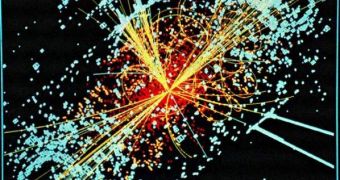After they began operating the world's largest particle accelerator, or possibly even before, engineers started noticing a number of design flaws at the Large Hadron Collider (LHC), the largest scientific experiment in the world. They have therefore decided to halt work at the machine throughout 2012, and to restart a fully-refurbished version in early 2013, or somewhere around that time. Until the time comes to shut it down, experts say that they will continue to operate the beamlines at relatively low energy levels, and to conduct investigations under these conditions, the BBC News reports.
LHC director Dr Steve Myers told the British news agency that design and safety issues will be the main target of the new repairs and upgrades, which will eventually enable the LHC to conduct experiments at massive energy levels in a safer environment. The accelerator is able to move proton beams at energy levels of up to 7 teraelectronvolts (7TeV), for a combined collision energy of 14 TeV. But engineers say that they will aim for this level only after the machine is refurbished, and add that they will stick to an energy level of about 3.5 TeV until shut-down.
“It's something that, with a lot more resources and with a lot more manpower and quality control, possibly could have been avoided but I have difficulty in thinking that this is something that was a design error. The standard phrase is that the LHC is its own prototype. We are pushing technologies towards their limits. You don't hear about the thousands or hundreds of thousands of other areas that have gone incredibly well. With a machine like the LHC, you only build one and you only build it once,” the LHC official said.
At this point, the collider is scheduled to reach the 7 TeV energy level later this month. It will continue to do so for about 2 years, as no one is willing to risk another incident such as the one in September 2008, which saw it being shut down for about a year. At that time, a faulty electrical connection resulted in a vast amount of liquid helium spilling in the tunnels, which took a lot of time and about 40 million Swiss franc (£24 million) to fix.

 14 DAY TRIAL //
14 DAY TRIAL //